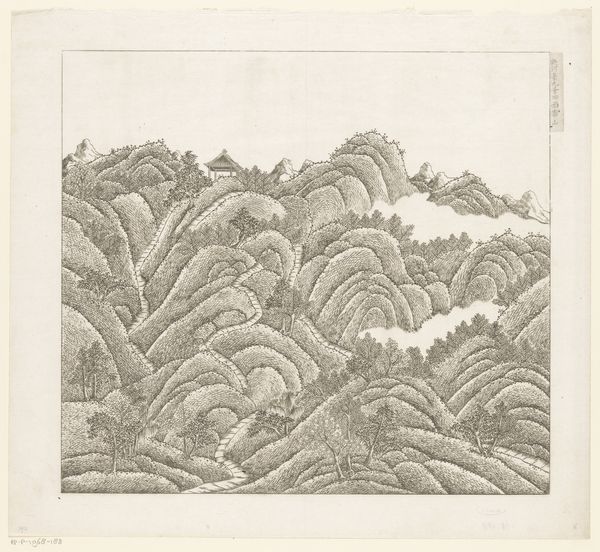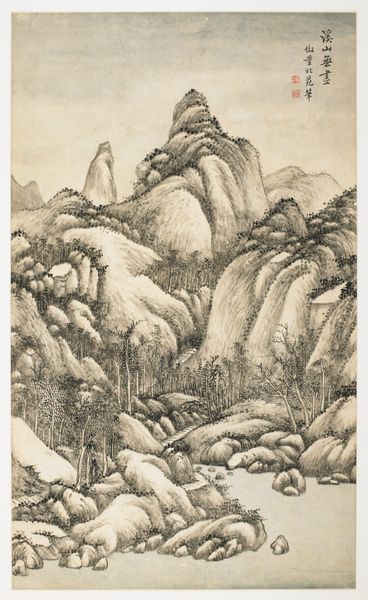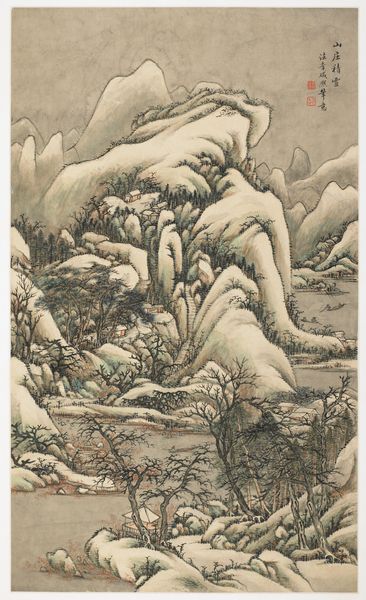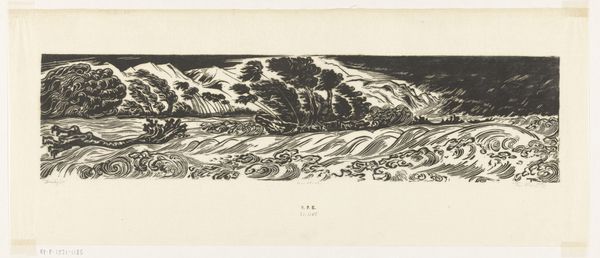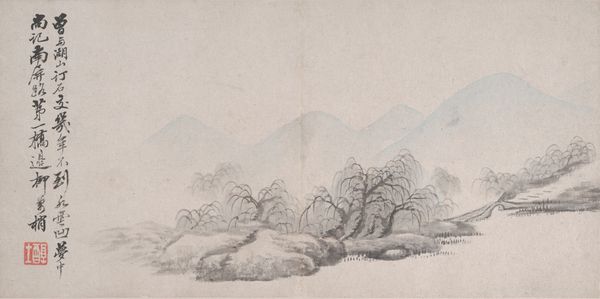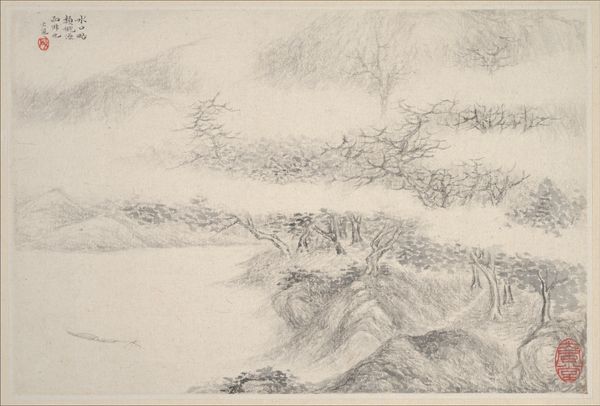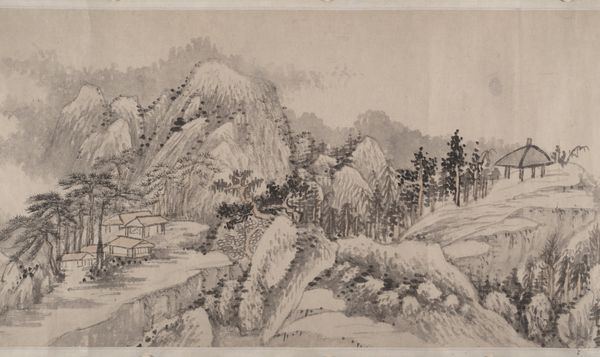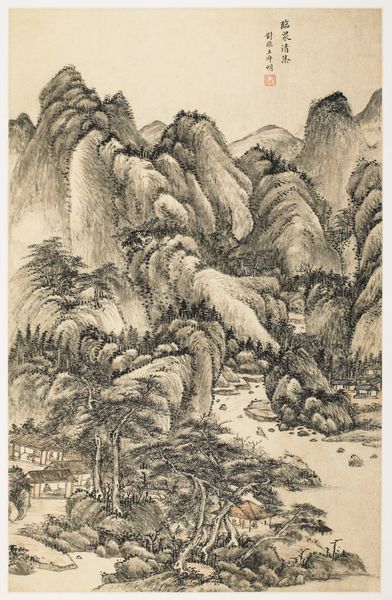
drawing, paper, ink
#
drawing
#
toned paper
#
asian-art
#
landscape
#
paper
#
ink
#
calligraphy
Dimensions: 10 3/4 x 16 1/8 in. (27.3 x 41 cm)
Copyright: Public Domain
Editor: So, we’re looking at "Landscapes with Poems," a work on paper with ink and calligraphy by Gong Xian, created in 1688. The ink strokes are incredibly textured; it almost feels like you could reach out and touch the craggy rocks and dense forest. What really strikes me is how the poem integrates right into the landscape itself. What story does this integration tell, or perhaps, hide? Curator: A key element here is Gong Xian's social positioning. He was a Ming loyalist, living in a time of Manchu rule. Integrating the poem serves less to hide, and more to declare. Consider the very act of including calligraphy: this wasn't merely decorative, it was a potent claim to literati identity, and through that, a subtle act of political resistance. The act of producing art with embedded statements served as subtle ways to resist governmental assimilation policies and advocate for traditional cultural values during that era. Editor: Political resistance expressed through landscapes? That's fascinating. I wouldn't have necessarily picked that up just from looking at the textures or the composition. The mountain feels… overwhelming. How does this fit in? Curator: Think about the traditional role of landscape painting in Chinese art. Often, landscapes represented the emperor's domain, his power and authority. By depicting this somewhat desolate, even chaotic landscape, Gong Xian might be subtly critiquing the current state of affairs. What emotions does the calligraphy evoke? Editor: It looks sad. There's a longing quality in the writing. The combination gives a feel of somber introspection...a lost connection? Curator: Precisely. And that's the point. It's about longing for the past, a past associated with a different political order, expressed through carefully constructed imagery and the deliberate use of text. It asks a bigger question about the role of art: is it truly "art for art's sake" or is it subtly reflecting the cultural narratives in society? Editor: I see it so clearly now; it’s as though the entire piece functions as coded cultural commentary. I’ll definitely have to think about calligraphy differently from now on! Curator: Excellent! Remember, every stroke tells a story; what you may perceive as mere nature might, in reality, echo with history’s complexities and whispered social rebellion.
Comments
No comments
Be the first to comment and join the conversation on the ultimate creative platform.

